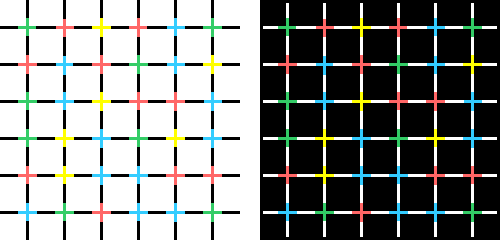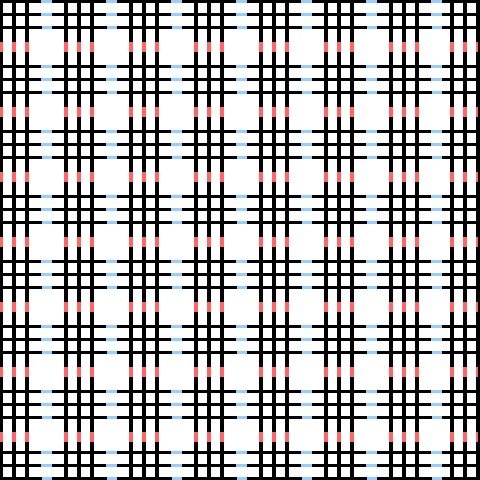Experiment with the Neon colour spreading effect
Left-Slider
stroke weight
Middle-Slider
line distance
Right-Slider
colorstripe width
Button C1
repeatedly click to change the color of the stripe
Button C2
repeatedly click to change the color of the lines
Button C3
repeatedly click to change the background color
Neon colour spreading effect is the generic term for the illusions shown here. The borders between them are fluid. Pure neon effects occur relatively infrequently and only in the circumstances described below. Perception of such effects is something of an esoteric experience: «neon colour spreading effect» describes the grainy glimmer effect of certain colour inclusions in repetitive structures that are reminiscent of a traditional neon tube. The word «spreading» means that this luminescent colour appears to fill the empty spaces in between lines. The aesthetic quality of this ghostly phenomenon was discovered in 1971 [1], rediscovered in 1975 [2] and has now made it possible for neurophysiologists and psychophysicists to gain a deeper understanding of the processes involved in seeing [4].

FFive requirements must be satisfied for the neon effect to occur [4]:
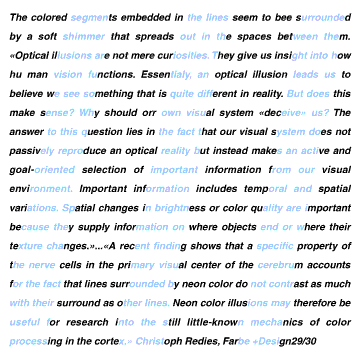
The colours green and yellow with medium wavelengths suppress the neon effect and create a normal colour spreading effect. The shortwave and longwave colours blue and red, on the other hand, support the neon effect. Choosing contrasting colours for the background and the inlays (red and green; blue and yellow) enhances the neon effect, while the use of closely related colours (e.g. orange and red) causes the effect to vanish.
The neon effect is more pronounced in dim lighting conditions. It is also interesting that grey lines embedded in coloured lines are capable of producing a weak neon colour spreading effect in the contrasting colour.
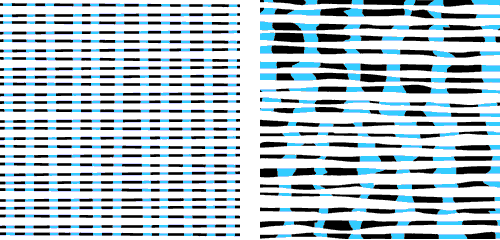
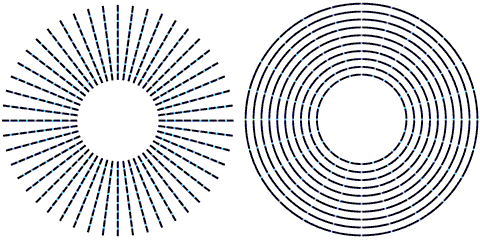
The collection of pictures shown contains a variety of neon colour spreading illusions. Powerful neon effects are only found in the characters of the title (fig. 1), in the picture with the floating circle above the confusion of bars fig. 6), in the picture with the semi-transparent bluish frosted glass disk (fig.7) and in the final picture (fig. 12). The other pictures in the collection form a bridge to Spot 06.
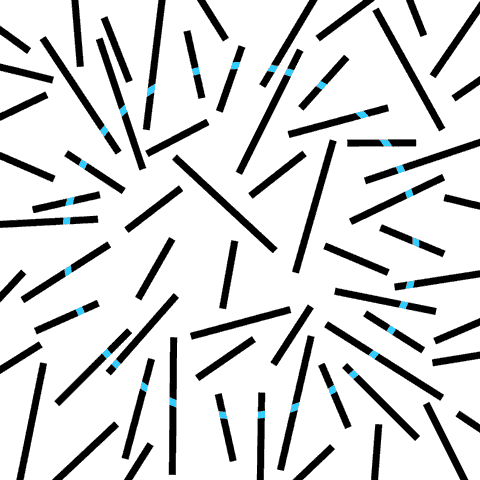
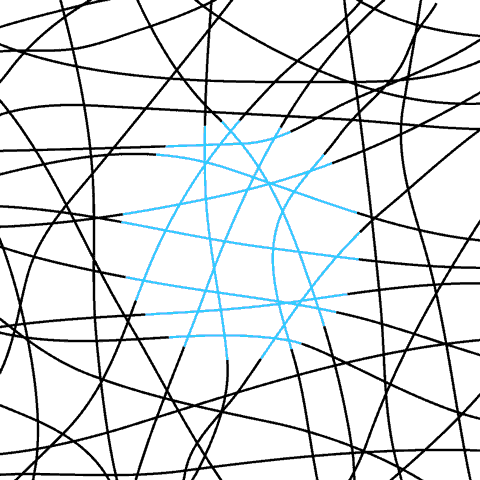
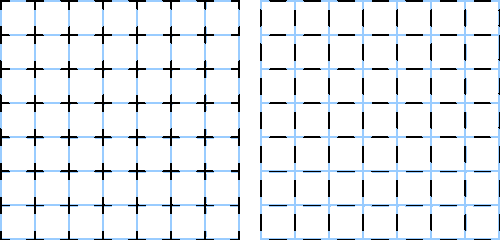
We know today that the neon effect and the Kanizsa effect (Spot 06), unlike the assimilation effect (Spot 09), occur in the upper regions of the visuosensory cortex. This apparently has nothing to do with contamination. Such a complex effect must either be an anomaly of human evolution or have a deeper meaning. It is of interest that following the glow of the colour which appears to have been sprayed into the spaces between the lines, the illusion of a semi-transparent structure is created at the front. This glowing seems to be a example of heightened perception. Even if the light of the inlays is insufficient to be perceived, our eyes - which were developed some 300 million years ago - may still be able to discern something thanks to this heightening of perception. The neon effect might be a remnant of the development of the power of sight under water. There is a lack of light there and the perception of transparent bodies located in front of filigree structures may have played a role.
